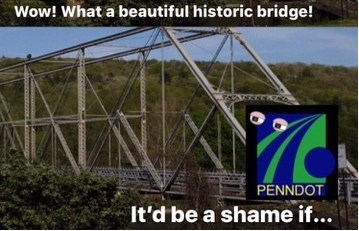NYS Judge Dismisses Lawsuits Challenging Fracking Delay
July 15, 2014Town of Delaware Methane Baseline Study
July 30, 2014Introduction
Casing and cement impairment in oil and gas wells can lead to methane migration into the atmosphere and/or into underground sources of drinking water. An analysis of 75,505 compliance reports for 41,381 conventional and unconventional oil and gas wells in Pennsylvania drilled from January 1, 2000–December 31, 2012, was performed with the objective of determining complete and accurate statistics of casing and cement impairment. Statewide data show a sixfold higher incidence of cement and/or casing issues for shale gas wells relative to conventional wells. Continue reading and/or download as a pdf.
Conclusion
Pennsylvania state inspection records show compromised cement and/or casing integrity in 0.7–9.1% of the active oil and gas wells drilled since 2000, with a 1.6- to 2.7-fold higher risk in unconventional wells spudded since 2009 relative to conventional well types. Hazard modeling suggests that the cumulative loss of structural integrity in wells across the state may actually be slightly higher than this, and upward of 12% for unconventional wells drilled since January 2009. This wide range of estimates is influenced by significantly higher rates of impairment in wells spudded in the NE counties of the state (average of 12.5%, range: 2.2–50%), with predicted cumulative hazards exceeding 40% (Figs. 5 and 6).
These results, particularly in light of numerous contamination complaints and explosions (21–23) nationally in areas with high concentrations of unconventional oil and gas development and the increased awareness of the role of methane in anthropogenic climate change (24), should be cause for concern. A recent investigative report of water contamination cases confirmed PADEP determination letters and enforcement orders indicating that at least 90 private water supplies across the state were damaged due to subsurface gas migration between 2008 and 2012 (25). The NE region of Pennsylvania, in particular, has experienced several widely publicized methane migration cases related to loss of structural integrity of wells, including the Dimock, Susquehanna County [Commonwealth of Pennsylvania Department of Environmental Protection (DEP) Consent Order to Cabot Oil & Gas, December 15, 2010] and Towanda, Bradford County (Commonwealth of Pennsylvania DEP Consent Order to Chesapeake Appalachia LLC, May 16, 2011) groundwater contamination cases. PADEP records cite unconventional wells spudded between 2009 and 2010 in both of these cases. Incidence rates inferred from direct comparison of indicator counts and the number of wells inspected in these townships as of December 31, 2012, are 21.2% and 15.4%, respectively; however, hazard modeling predicts a cumulative 7-y hazard for similar wells in the region twofold higher (Figs. 5 and 6; t = 364).
Our aim in this study was to quantify the rate of barrier impairment in a population of modern on-shore oil and gas wells, and in doing so, we have noted significant temporal and spatial differences in risk of impairment. It is beyond the scope of this paper to explain these spatial and temporal differences. Various biasing effects might influence these differences and are the focus of our continuing study of this problem. Moreover, results presented here represent a snapshot in time of an evolving situation. This study presents the state of structural integrity loss in oil and gas wells over a 13-y period in the state of Pennsylvania as inferred from publicly available data, while also presenting a risk assessment model of future performance. It should be a priority to update and validate this model with well monitoring and evaluation data reported to the PADEP from the industry as they are collected. Finally, although this study discusses one possible primary mechanism of methane migration to groundwater aquifers and fugitive emissions to the atmosphere, more studies are needed to investigate the association between the structural integrity loss in oil and gas wells and the incidence of these unwanted events.



